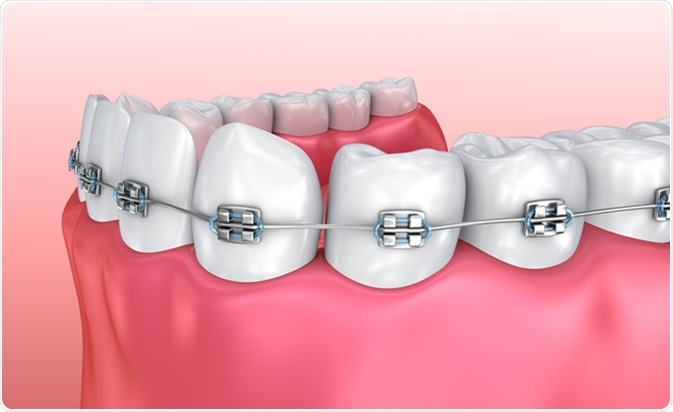Leading Tips for Picking the most effective Cumming Orthodontist for Braces and Aligners
Leading Tips for Picking the most effective Cumming Orthodontist for Braces and Aligners
Blog Article
Comprehensive Guide to Orthodontics Procedures for Correcting Dental Imbalances
Understanding the intricacies of each procedure, including their systems, benefits, and prospective disadvantages, is important in making notified choices regarding one's orthodontic treatment. As we navigate through the extensive guide to orthodontic treatments for dealing with dental imbalances, the detailed information of each approach will certainly unravel, losing light on the course toward a useful and unified dental positioning.
Orthodontic Procedures Summary

In enhancement to clear aligners and standard braces, orthodontists may also recommend various other treatments like headwear, palatal expanders, or retainers to deal with certain alignment concerns (cumming orthodontics). These procedures are tailored per individual's distinct demands and may include a combination of therapies to attain the preferred results. Normal adjustments and surveillance are vital parts of orthodontic treatment to ensure progression gets on track and to make any type of necessary modifications along the road. By undergoing orthodontic treatments, clients can not just achieve a straighter grin however additionally boost their general dental health and feature.
Standard Braces: Just How They Work
When thinking about orthodontic treatments for oral imbalances, typical dental braces stand out as a time-tested method for remedying teeth positioning. Conventional braces are composed of braces, cables, and bands that collaborate to use continuous pressure on the teeth, gradually moving them into the desired alignment. The brackets are attached to the teeth using an unique adhesive, and the cables are threaded via the braces. By changing the stress of the cords, orthodontists can manage the direction and pressure related to each tooth, directing them right into proper positioning gradually.
One trick aspect of just how traditional dental braces work is the process of bone renovation. As pressure is related to the teeth with the braces, the bone bordering the teeth is improved to support the new tooth settings. This improvement is crucial for the lasting stability of the remedied alignment. People will certainly require normal changes at the orthodontist's workplace to ensure the dental braces remain to use the right pressure for efficient teeth movement.
Unseen Aligners: Pros and Cons
Invisible aligners offer a very discreet and hassle-free option to standard braces for dealing with dental misalignments. These clear, personalized trays are essentially invisible when used, making them an appealing choice for people seeking a much more visually pleasing orthodontic therapy. Among the key benefits of unnoticeable aligners is their removability, permitting less complicated upkeep of dental health contrasted to typical braces. Individuals can remove useful reference the aligners before consuming or brushing their teeth, minimizing the threat of food getting stuck in the home appliance and streamlining the cleansing next procedure.

Surgical Orthodontic Options
Surgical interventions in orthodontics existing practical choices for dealing with complex dental imbalances that might not be effectively resolved via standard orthodontic treatments. While typical dental braces and unseen aligners can fix many orthodontic issues, certain cases call for medical intervention to achieve optimum outcomes. Surgical orthodontic alternatives are commonly advised for serious malocclusions, significant jaw discrepancies, and instances where the underlying bone structure needs adjustment to attain appropriate positioning.
One common surgical orthodontic treatment is orthognathic surgery, which entails repositioning the jaws to fix functional concerns such as trouble speaking or eating. This surgical treatment is frequently performed in cooperation with an orthodontist that assists straighten the teeth prior to and after the procedure. Surgical orthodontics might likewise involve treatments to subject influenced teeth, eliminate excess gum cells, or improve the jawbone to produce a much more harmonious face account.
Before taking into consideration medical orthodontic choices, patients undertake a thorough evaluation to figure out the need and possible benefits of such treatments. orthodontist. While surgical procedure may seem difficult, it can significantly enhance both the feature and aesthetic appeals of the smile in cases where traditional orthodontic therapies fall short
Retainers and Post-Treatment Treatment

Post-treatment treatment includes following the orthodontist's directions carefully. This might consist of correct dental hygiene practices, attending follow-up visits, and putting on the retainers as suggested. Failure to abide by post-treatment care instructions can cause relapse, where the teeth progressively return in the direction of their original settings. Consistent retainer wear, great dental health, and regular dental exams are vital for keeping the results attained via orthodontic surgical procedure and guaranteeing the lasting security of the dealt with oral positioning.
Final Thought
In verdict, orthodontic treatments use numerous choices for correcting dental misalignments. read the full info here Surgical orthodontic choices are offered for extra extreme misalignments. Overall, orthodontic treatments can effectively enhance oral health and wellness and aesthetic appearance.
As we browse with the comprehensive guide to orthodontic treatments for dealing with oral misalignments, the complex details of each method will unravel, dropping light on the path toward a harmonious and useful dental placement. - cumming braces
One of the most typical orthodontic treatments is the usage of dental braces, which are composed of metal brackets and cords that use gentle stress to progressively move teeth right into the wanted position.When taking into consideration orthodontic therapies for oral misalignments, standard braces stand out as a reliable technique for fixing teeth placing. Furthermore, invisible aligners may not be suitable for intricate orthodontic issues that call for more substantial teeth motion, as they are commonly advised for light to moderate instances. Retainers are tailor-made orthodontic devices created to hold teeth in their remedied placements after the conclusion of orthodontic treatment.
Report this page